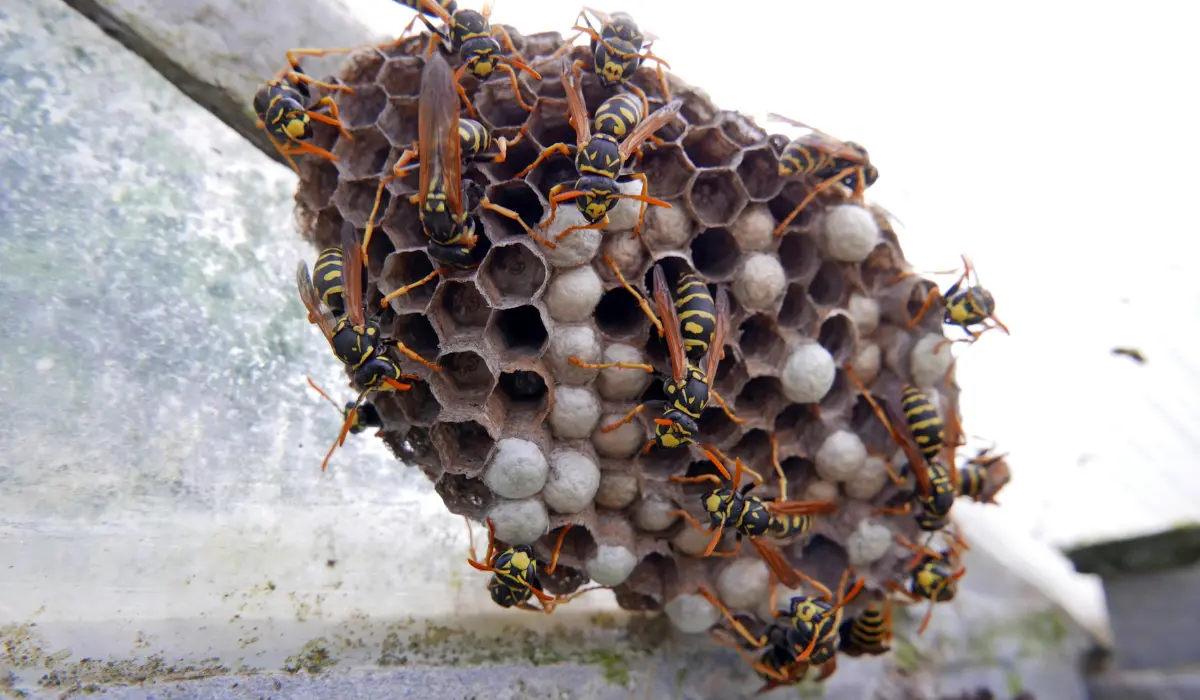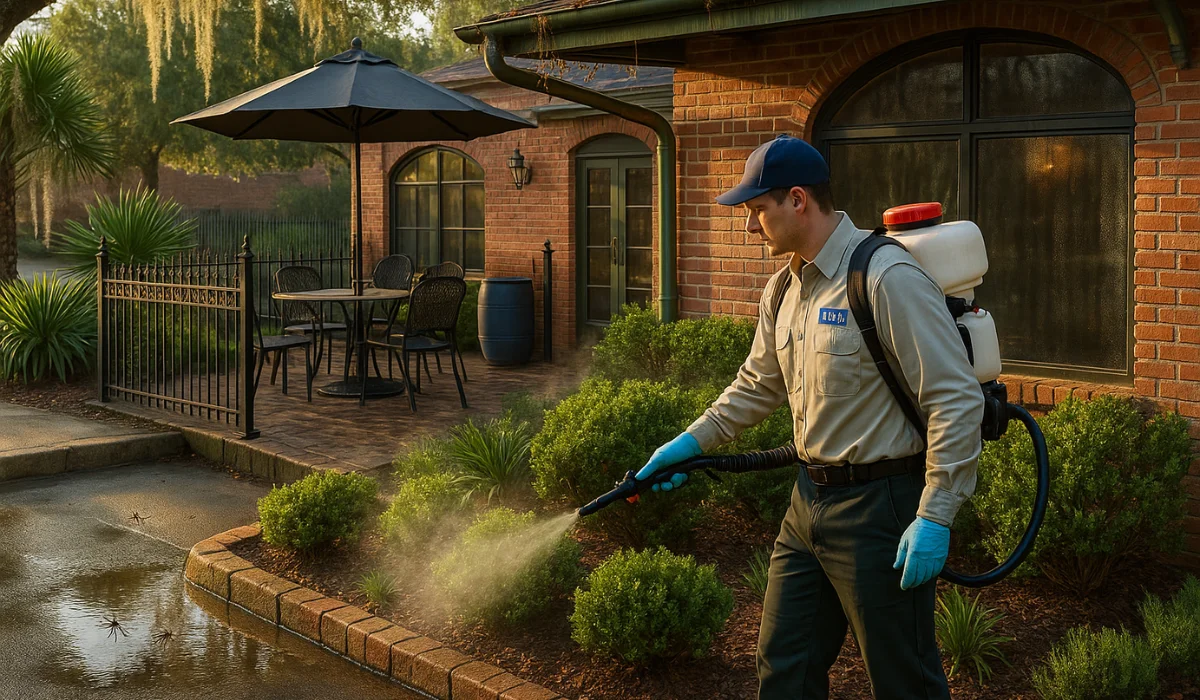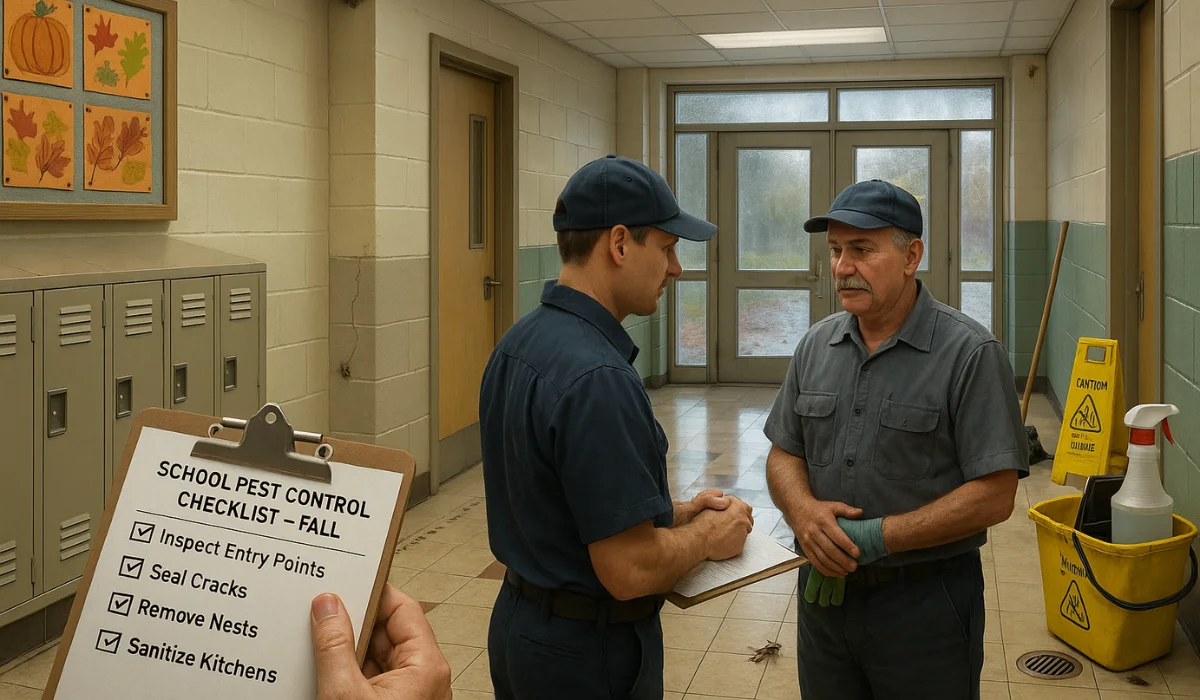If you’ve ever stepped outside with your coffee and spotted wasps circling your porch light or tucked into the eaves, you’re not alone.
In South Louisiana, the warm weather and outdoor living make porches prime real estate for these stinging pests. And if it seems like they keep coming back, they probably are. Wasps are persistent; once they find a nesting site they like, they tend to stay there.
So, what’s attracting them, and how can you stop the cycle? Let’s look at why wasps keep returning and how to make your porch a no-fly zone.
Key Takeaways
• Wasps are drawn to porches due to leftover scent trails, shelter, and easy access to food and water.
• Eaves, crevices, and corners provide prime locations to build nests, especially for paper wasps and hornets.
• DIY wasp repellent methods using peppermint or essential oils can help, but professional pest control is the most effective solution.
• Removing a wasp nest without cleaning the area or sealing it up can lead to new nests forming in the same spot.
Why Wasps Target Your Porch
From a wasp’s point of view, your back porch or front porch might be the perfect home. They look for places with:
• Shelter: The eaves and ceiling corners offer protection from wind and rain.
• Food: Wasps search for sources of food like uncovered pet food, sweet drinks, and nearby garbage cans.
• Water: Even small puddles from plants or AC drips can attract them.
• Nesting history: If there was a previous wasp nest, lingering pheromones can signal to others that it’s a good place to return.
Once wasps find a spot they like, they come back to build nests year after year.
Common Wasps on Louisiana Porches
There are several types of wasps that frequent Louisiana homes, especially in spring and summer:
• Paper wasps: Known for their umbrella-shaped nests, they are often seen clinging to porch ceilings and railings.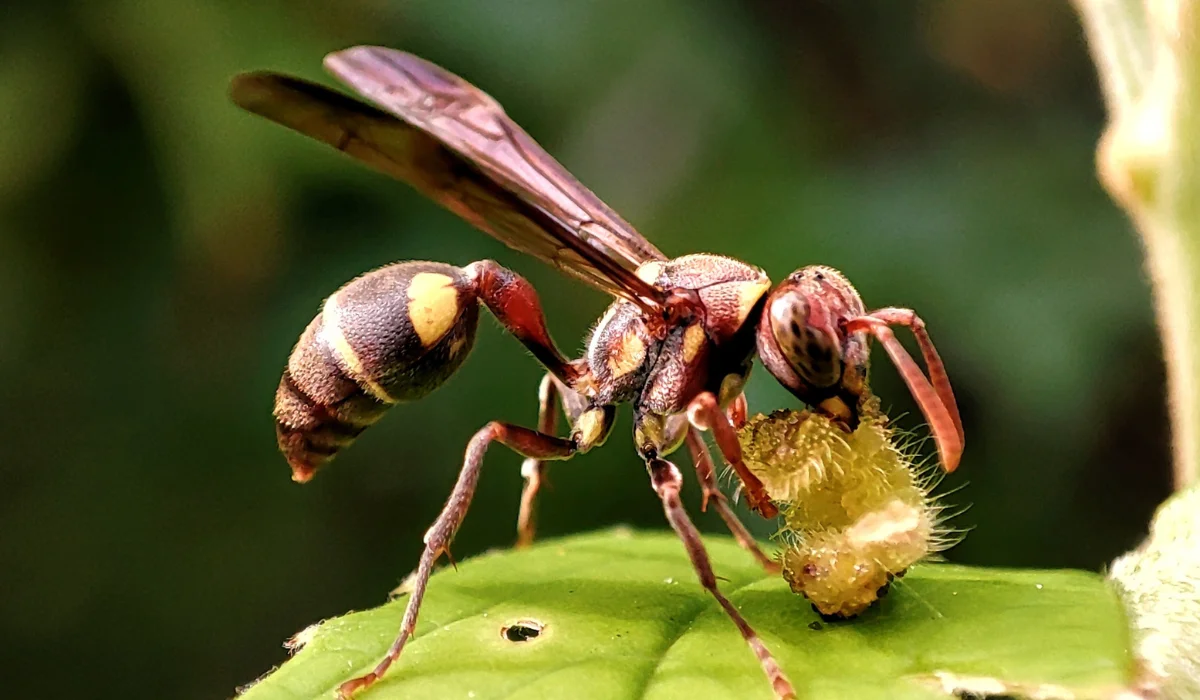
• Yellow jackets: These can nest in wall voids or porch corners. They’re aggressive and sting when disturbed.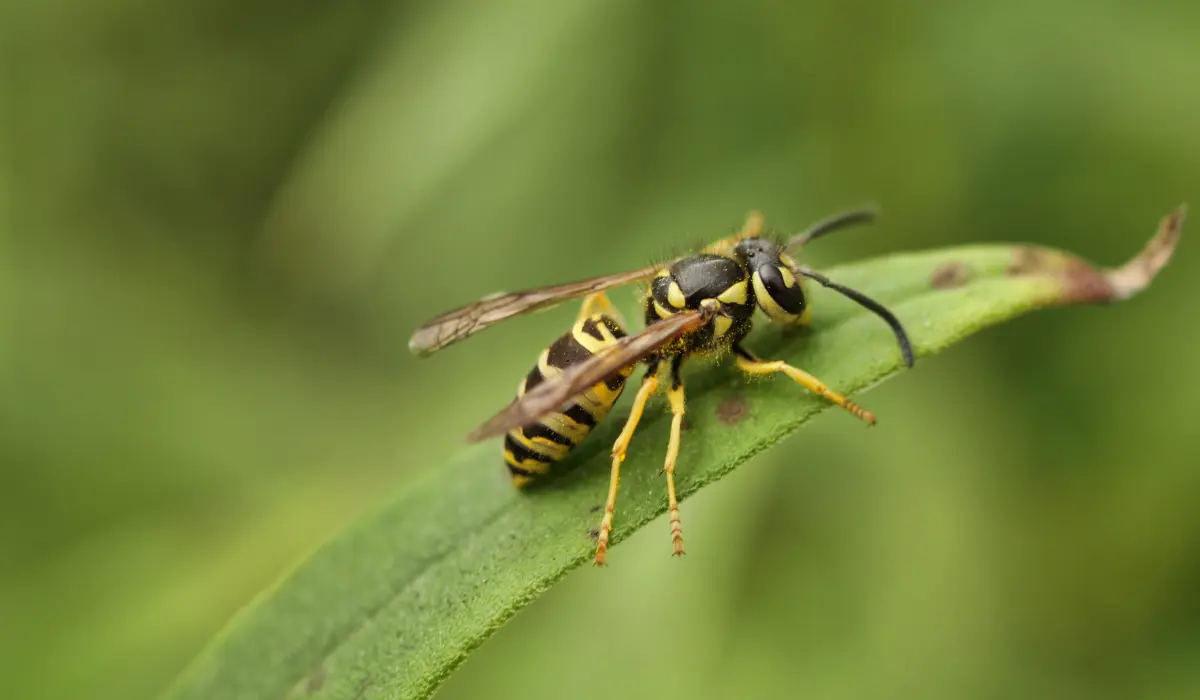
• Hornets and bald-faced hornets: They build large, round, enclosed nests under overhangs or trees.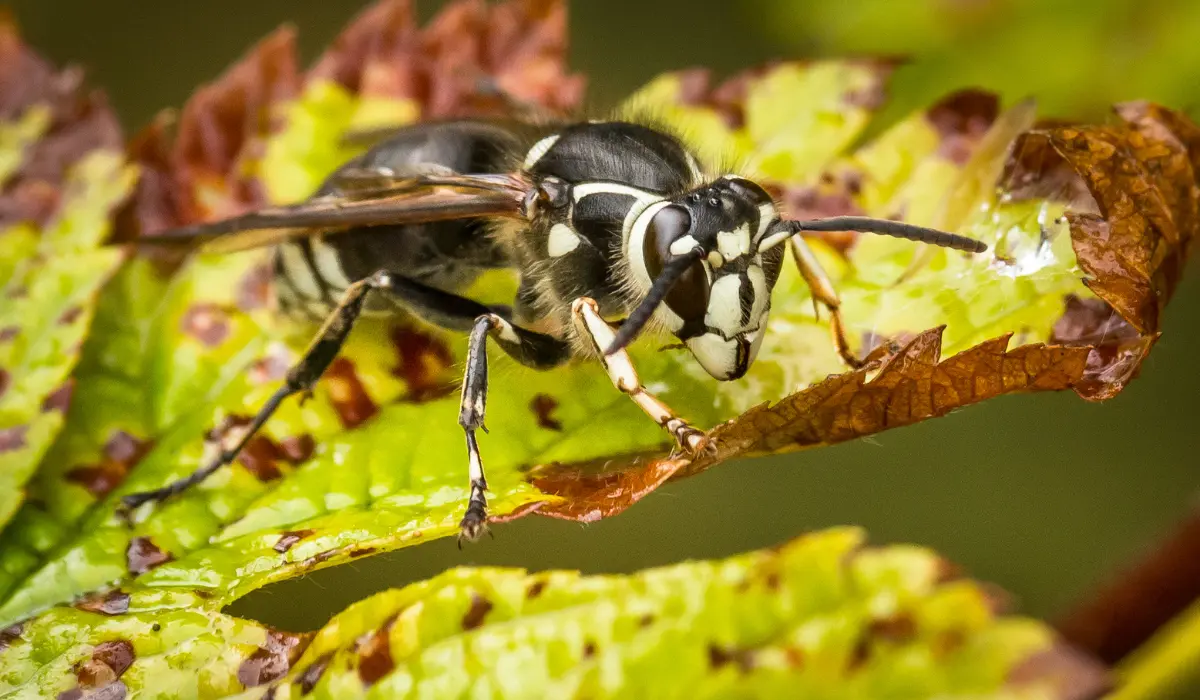
• Mud daubers: These solitary wasps build tube-shaped nests in protected crevices.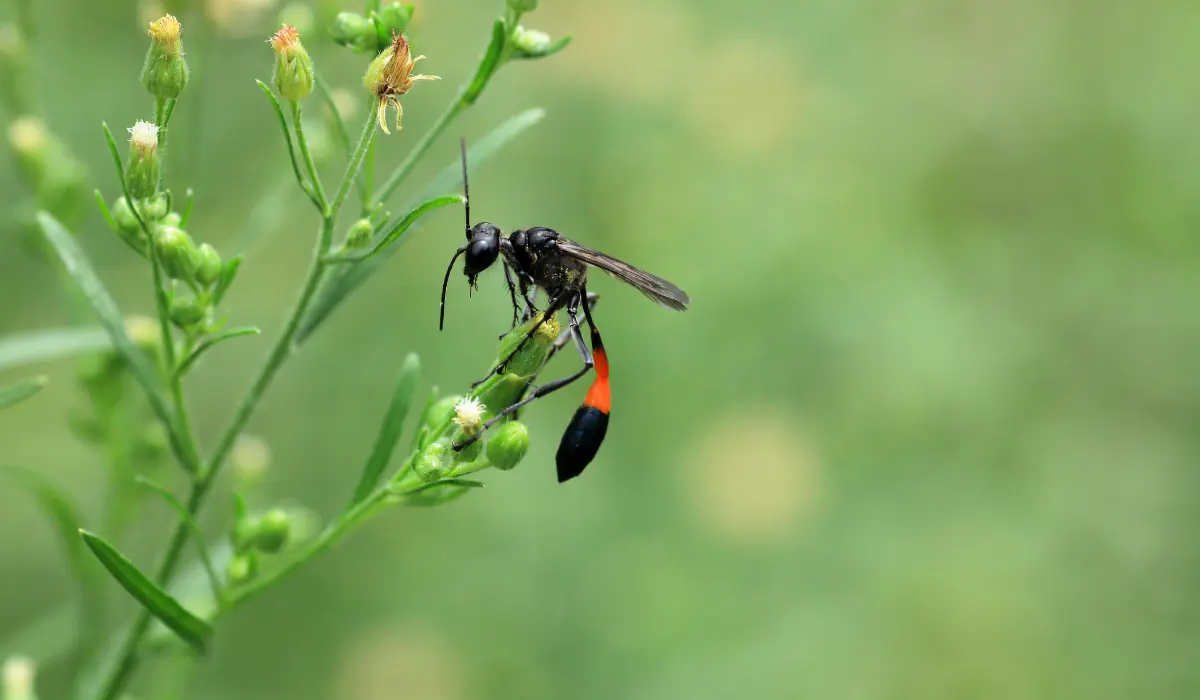
While wasps and other pollinators play a role in the ecosystem, a wasp problem near your living space isn’t something any homeowner wants to deal with.
Why Do They Keep Coming Back?
Even if you knock down a nest, wasps may return to the same spot. Why? Because they remember it. Wasps have a strong scent memory and follow chemical trails left behind. If you don’t clean and seal the area thoroughly, you may find new nests within days.
Some species, like solitary wasps and mud daubers, are less aggressive but will still return to favored locations seasonally.
How to Get Rid of Wasps on the Porch
Here are effective ways to get rid of wasps and prevent future infestations.
1. Knock Down and Clean Old Nests
Wait until after sunset, when activity is low. Use a long stick or sprayer to knock down the nest. Immediately clean the area with soapy water and a brush to scrub off any pheromones. Removing a wasp nest alone isn’t enough; you must also erase the scent trail.
2. Use Natural Wasp Repellent
Several natural ways to deter wasps include:
• Peppermint oil: Mix with water and a few drops of dish soap in a spray bottle. Spray around the eaves, porch ceilings, and crevices.
• Essential oils: Blend clove, lemongrass, and geranium oils for a DIY wasp repellent.
• Citronella, marigold, and geranium plants also help naturally repel wasps.
3. Seal Entry Points
Use caulk to seal small cracks, holes, or crevices in porch railings, walls, and trim. Pay special attention to gaps around the front door, windows, and light fixtures.
4. Eliminate Food and Water Sources
Remove any exposed pet food, and secure lids on garbage cans. Sweep up food crumbs or drink spills right away, especially sugary ones.
5. Set Up Wasp Traps
Homemade or store-bought wasp traps can lure wasps away from your porch. These traps usually work by attracting wasps with sugar water or protein bait.
6. Try DIY Preventive Measures
For a DIY approach, combine water, dish soap, and peppermint oil in a sprayer and treat the porch regularly. Hang reflective items like CDs or aluminum foil strips to deter wasps visually.
Avoid using pesticide products with strong residues, especially near areas where people gather.
When to Call a Pest Control Company
If you’ve tried multiple methods and wasps keep coming back, it may be time to call a local pest control company.
At LaJaunie’s Pest Control, we specialize in treating high-traffic areas like porches, garages, and entryways. Our team treats eaves up to 25 feet high, utilizing targeted pest control methods that protect your family while eliminating the infestation.
We treat all major wasp species, including hornets and yellow jackets, using professional-grade materials like Waspfreeze and Bifen, not over-the-counter insecticides. We also clean up larvae and nesting materials to ensure the entire cycle is disrupted.
If you’re in the Houma, Thibodaux, or Baton Rouge areas, just give us a call, and you can count on our fast response and retreat guarantee.
Conclusion
When it comes to wasps coming back to your porch, prevention is just as important as removal. They’re drawn to safe, sheltered spaces, especially those with lingering scent trails.
If you’ve got a wasp problem that won’t quit, LaJaunie’s Pest Control can help you tackle it with confidence and care.
FAQs
How can I permanently keep wasps off my back porch?
To keep wasps away, remove all old nests, seal cracks with caulk, clean surfaces thoroughly, and apply peppermint oil or other repellents regularly.
Are honey bees treated the same way as wasps?
No. Honey bees are protected pollinators. If you think you’ve got honey bees, contact an entomologist or a bee relocation expert. LaJaunie’s does not treat honey bees, but we can handle all other stinging insects.
What if I have an allergic reaction to a sting?
If you or someone in your household has a known allergy, take every wasp sighting seriously. Avoid disturbing nests, and call a licensed exterminator immediately.
 By: LaJaunie's Pest Control
By: LaJaunie's Pest Control 